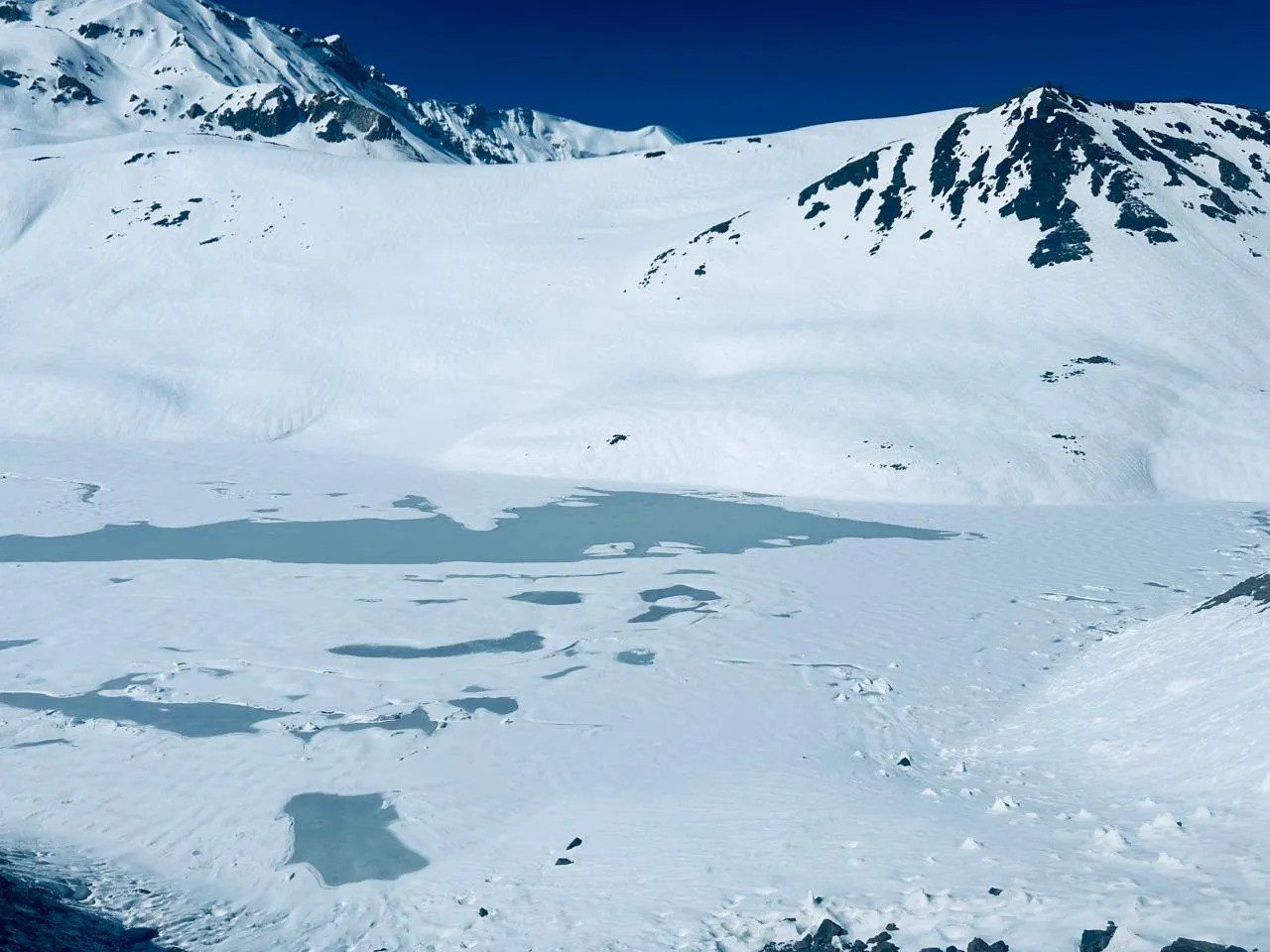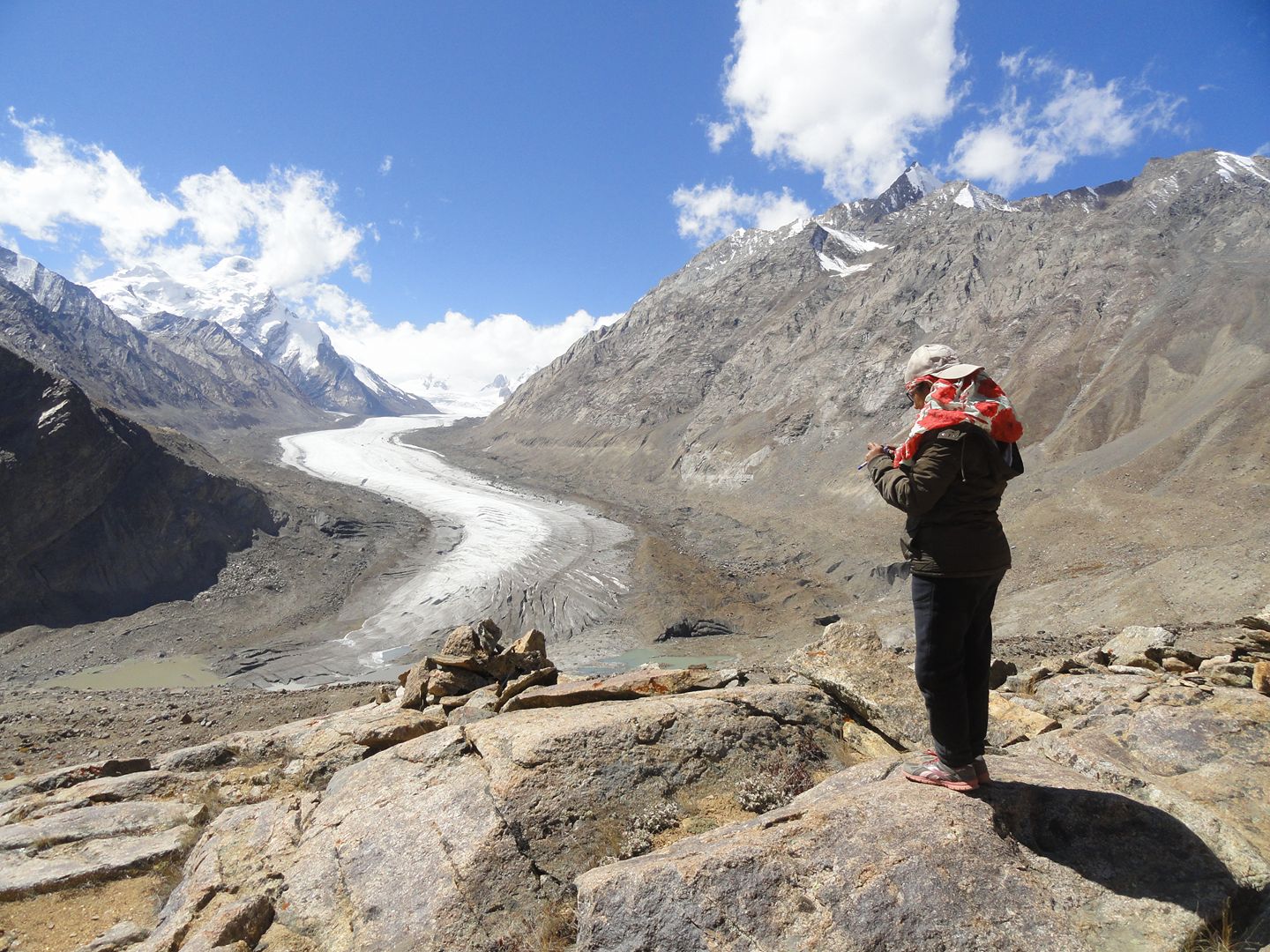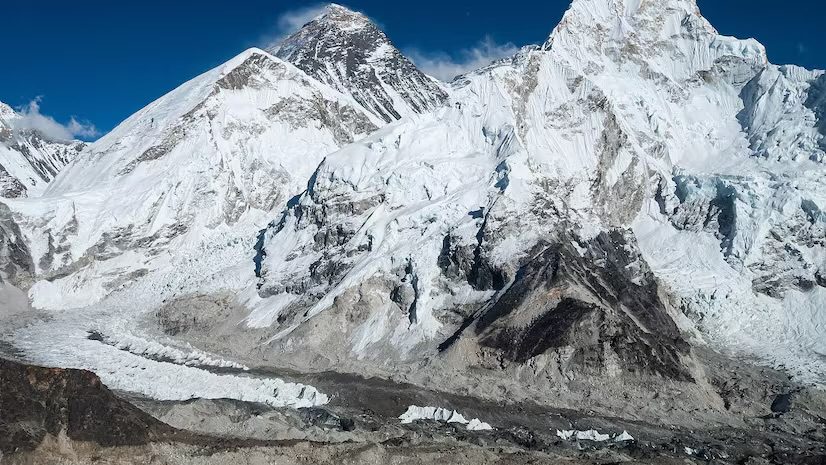Nestled within the high reaches of the Indian Himalayas, Ladakh offers an unforgettable trekking experience through its glacier valleys. Known for its breathtaking, rugged landscapes, and remote trekking routes, Ladakh is a destination that captures the heart of adventure-seekers worldwide. From the vast, frozen expanse of the Siachen Glacier to the scenic beauty of the Drang-Drung Glacier and the hidden wonders of Parkachik Glacier, Ladakh’s glacier valleys offer a one-of-a-kind journey that leaves trekkers in awe.
In this guide, we’ll dive into the details of trekking in Ladakh’s glacier valleys, covering essential planning, popular trekking routes, safety tips, and firsthand customer testimonials to give you insight into what makes this journey so special.

Why Trekking in Ladakh’s Glacier Valleys is Unique
Ladakh’s glacier valleys are home to some of the highest and most remote trekking routes on earth, giving trekkers the rare chance to witness untouched natural beauty. The trails offer views of colossal glaciers, snow-covered peaks, and striking rock formations that stand as silent giants in the vast landscape. This remote part of the Himalayas is known for its sparse population, pristine wilderness, and challenging terrain, making it a prime destination for adventurous hikers.
“I’ve trekked across various landscapes, but Ladakh’s glacier valleys are truly unmatched in their beauty and solitude. You feel like you’re walking through a frozen wonderland untouched by time.” — Oliver M., Geologist, United Kingdom
Planning Your Glacier Trek in Ladakh
Best Time for Glacier Trekking in Ladakh
The ideal time for trekking in Ladakh’s glacier valleys falls between June and September, when temperatures are milder, and trekking routes are more accessible. Winter treks are possible, such as the famous Chadar Trek, but are limited due to extreme cold and snow-covered paths.
| Season | Average Temperature | Conditions |
|---|---|---|
| Summer (June-August) | 15-25°C | Best for glacier treks, pleasant days |
| Winter (Dec-Feb) | -10 to -25°C | Only select winter treks available |
| Autumn (Sept-Oct) | 5-15°C | Clear skies, stunning landscapes |
Essential Permits and Regulations
Ladakh’s glacier valleys often require permits, especially for areas near the Siachen Glacier and other restricted regions. Make sure to check requirements with local authorities or your trekking guide to secure permits in advance. Responsible tourism practices are encouraged to help preserve the region’s fragile ecosystem.

Choosing a Guided or Independent Trek
Guided treks are highly recommended, especially for trekkers new to high-altitude or glacier trekking. Guides are familiar with local conditions, customs, and safety protocols. However, experienced trekkers may consider independent routes with proper preparation and knowledge of the area.
“Our guide made all the difference. He knew the safest routes and shared so much about the history and legends of each valley. I can’t imagine doing this trek without a guide.” — Amelia R., Photographer, Australia
Preparing for High-Altitude Treks in Ladakh’s Glacier Valleys
Acclimatization Tips for High-Altitude Trekking
Acclimatization is key to enjoying a successful trek through Ladakh’s glacier valleys. The high-altitude environment can lead to altitude sickness, so it’s essential to acclimate gradually and avoid overexertion.
Tips for Acclimatization:
- Take it slow: Give your body time to adjust by resting and avoiding rapid altitude gain.
- Stay hydrated: Drink plenty of water to reduce the risk of altitude sickness.
- Listen to your body: If you feel dizzy or nauseous, take a break and descend if necessary.
Essential Gear for Glacier Trekking
Packing the right gear is crucial for comfort and safety. Here’s a checklist for trekking in Ladakh’s cold climates:
| Item | Description |
|---|---|
| Thermal layers | To stay warm in varying temperatures |
| Waterproof jacket | For sudden snow or rain showers |
| Trekking poles | Helpful on icy or uneven paths |
| High-quality boots | Insulated and waterproof for glacier terrain |
| Sleeping bag | Rated for below-zero temperatures |
| Sunglasses & sunscreen | Essential for sun exposure on high-altitude snow |
Popular Glacier Valley Treks in Ladakh
Trekking Through Nubra Valley
The Nubra Valley trek takes trekkers through an expansive landscape of sand dunes, green villages, and towering mountains. Although it’s not a glacier trek per se, Nubra Valley offers unique features, including hot springs and a chance to interact with local communities.

Zanskar Valley: A Remote Glacier Adventure
The Zanskar Valley trek is one of Ladakh’s most remote trekking experiences, with stunning views of the Drang-Drung Glacier, one of the largest glaciers in Ladakh. The trek is physically demanding but rewards trekkers with breathtaking glacier views, pristine landscapes, and a rare look into the lives of isolated Himalayan communities.
“The Zanskar Valley trek was the adventure of a lifetime. Drang-Drung Glacier was the highlight, with its sheer size and beauty. It’s a challenging trek, but absolutely worth every step.” — Sam K., Engineer, United States
The Frozen River Adventure: Chadar Trek
The Chadar Trek on the frozen Zanskar River is a legendary winter trek that takes you over a sheet of ice formed over the river. It’s accessible only in winter and gives trekkers a surreal experience of walking on ice, surrounded by towering cliffs.
Other Noteworthy Glaciers: Siachen, Parkachik, Machoi, and Shafat
- Siachen Glacier: Known as the highest battlefield in the world, Siachen Glacier is a restricted area but a prominent part of Ladakh’s glacial landscape.
- Parkachik Glacier: Near Kargil, this glacier offers incredible views and is accessible to trekkers, providing a glimpse of melting ice flows and spectacular rock formations.
- Machoi Glacier: Located near Zoji La pass, the Machoi Glacier is a lesser-known but beautiful glacier accessible for adventure trekkers.
- Shafat Glacier: This glacier is visible from many trekking routes and offers sweeping views of ice masses framed by rugged terrain.
“Trekking near the Machoi Glacier was unreal. We had clear skies, and the glacier seemed to glow under the sun. The experience felt almost otherworldly.” — Lars J., Environmental Scientist, Norway
Experience of Trekking Through Ladakh’s Glacier Valleys
Wildlife and Natural Beauty in Ladakh’s Valleys
Ladakh’s valleys are home to rare wildlife, including snow leopards, ibex, and Himalayan marmots. The area’s natural beauty, with its stark landscapes and clear blue skies, makes it a haven for wildlife photographers and nature enthusiasts.

Cultural Encounters and Local Monasteries
Trekking through Ladakh’s valleys provides ample opportunities to engage with Ladakh’s rich culture, from visiting ancient monasteries to interacting with local villagers. The region’s monasteries, often set atop hills or nestled in valleys, offer insight into the spiritual practices of the local Buddhist communities.
“Interacting with locals and visiting monasteries added a whole new dimension to our trek. It’s not just about the landscapes; it’s about the culture and the people, too.” — Evelyn L., History Professor, Canada
Photography Tips for Glacier Trekkers
Ladakh’s unique lighting, snow-capped peaks, and expansive landscapes make it a dream for photographers. Here are some photography tips for capturing the beauty of Ladakh’s glacier valleys:
- Capture golden hours: Early morning and late afternoon provide the best lighting.
- Use polarizing filters: These help reduce glare from the snow and enhance colors.
- Bring extra batteries: Cold weather can drain batteries quickly, so bring spares to ensure you don’t miss a shot.
Practical Tips for a Safe and Enjoyable Trek
Health and Safety Tips for Glacier Trekking
- Stay hydrated: Altitude can cause dehydration, so it’s important to drink plenty of water.
- Pack for emergencies: First aid kits and altitude sickness medication are essential.
- Know your limits: Ladakh’s altitude and challenging terrain can be strenuous; rest as needed.
Staying Eco-Friendly: Responsible Trekking Practices
Respect for Ladakh’s delicate environment is crucial. Simple steps like carrying reusable water bottles, minimizing waste, and avoiding single-use plastics help preserve this pristine landscape.

Packing Checklist for Glacier Valley Treks
Use this list as a guide for essential items:
- Insulated clothing layers
- Waterproof trekking boots
- First-aid kit and medications
- High SPF sunscreen
- Headlamp with extra batteries
Q&A Section
Q: What is the best time to go trekking in Ladakh’s glacier valleys?
A: The best trekking season is from June to September, when weather conditions are optimal. Winter treks, such as the Chadar Trek, are available in January and February.
Q: How can I prevent altitude sickness in Ladakh?
A: Gradual acclimatization is key. Rest often, stay hydrated, and consider altitude sickness medication if recommended by a healthcare professional.
Q: Are permits required for trekking in Ladakh?
A: Yes, certain regions, especially near borders, require permits. Always check current regulations before your trek.
Q: What equipment is essential for a glacier trek in Ladakh?
A: Thermal clothing, trekking poles, high-quality boots, and a sleeping bag rated for sub-zero temperatures are essential.
Q: How difficult are the glacier treks in Ladakh?
A: These treks vary in difficulty, with some requiring advanced trekking experience due to altitude and terrain. The Chadar Trek and Zanskar Valley treks are among the more challenging routes.
Q: How can I practice responsible tourism in Ladakh?
A: Pack out all trash, use biodegradable items, and respect local customs and wildlife to preserve Ladakh’s environment.
Conclusion: Embracing the Journey Through Ladakh’s Glacier Valleys
Trekking through Ladakh’s glacier valleys is an adventure that combines natural beauty, cultural richness, and a touch of the mystical. These trails offer challenging terrains, rare wildlife sightings, and unforgettable encounters with both nature and Ladakh’s resilient communities. Embrace the journey, respect the land, and discover why these glacier valleys remain one of the world’s most awe-inspiring trekking destinations.








